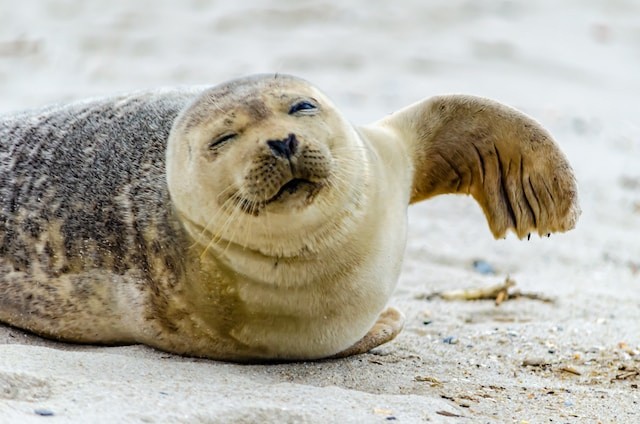Sea lions are among the most charismatic and beloved marine animals in California, but they are also facing a deadly threat from toxic algae blooms.
These blooms produce a neurotoxin called domoic acid, which can cause seizures, brain damage and death in sea lions and other marine mammals.
Scientists are monitoring the situation and trying to understand the causes and consequences of this phenomenon.
Domoic acid poisoning causes and symptoms

Domoic acid is a natural compound that is produced by certain species of microscopic algae, or phytoplankton, that live in the ocean, as per WION.
These algae can multiply rapidly under certain conditions, such as warm water, abundant nutrients and sunlight, forming large patches of green or brown water known as harmful algal blooms (HABs).
When sea lions and other marine animals eat fish or shellfish that have fed on these algae, they ingest domoic acid, which accumulates in their bodies.
Domoic acid affects the nervous system, causing symptoms such as disorientation, confusion, vomiting, head weaving, muscle twitching, and seizures.
In severe cases, domoic acid can lead to coma and death.
According to the Marine Mammal Center, a nonprofit organization that rescues and rehabilitates sick and injured marine mammals, at least 14 sea lions have died from domoic acid poisoning in Southern California since mid-August.
The center has also treated dozens of other sea lions that have shown signs of exposure to the toxin.
Detection of domoic acid poisoning in sea lions
Domoic acid poisoning is not a new problem for sea lions and other marine animals in California.
The first documented outbreak occurred in 1998, when hundreds of sea lions were stranded on the coast with neurological symptoms, as per The Guardian.
Since then, there have been several episodes of HABs and domoic acid poisoning, especially during El Niño years, when warmer water favors algal growth.
Scientists are trying to understand the factors that trigger and sustain HABs, as well as their impacts on marine ecosystems and human health.
They are also developing methods to detect and predict HABs using satellite imagery, remote sensors, drones, and citizen science.
Solutions for protecting sea lions
Preventing or stopping HABs is not easy, as they are influenced by complex interactions between ocean currents, weather patterns, climate change, and human activities, as per SFgate.
Therefore, the best way to protect sea lions and other marine animals from domoic acid poisoning is to monitor their health and behavior, rescue and treat those that are affected, and educate the public about the risks and signs of exposure to the toxin.
Unfortunately, there is no cure for domoic acid poisoning in marine animals.
The only treatment available is supportive care, which includes fluids, food, anti-seizure medication and patience.
The toxin will eventually flush out of the animal's system through urine, but it may cause permanent brain damage or organ failure in some cases.
Younger animals have a better chance of survival than older ones, because they eat less fish and therefore consume less toxin.
However, younger animals may also be more vulnerable to other threats, such as predators or starvation.
To reduce the risk of domoic acid poisoning in marine animals, people should avoid feeding them or leaving food waste on the beach.
People should also report any sick or stranded animals to local authorities or rescue organizations. People should also be careful when eating seafood from areas affected by HABs, as domoic acid can also cause illness in humans.
© 2025 NatureWorldNews.com All rights reserved. Do not reproduce without permission.





